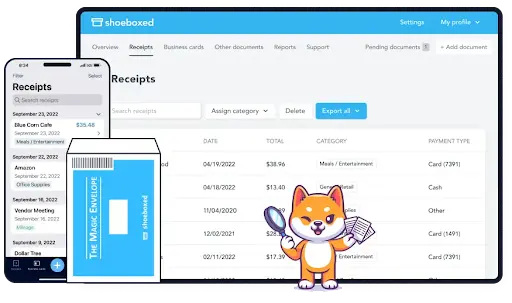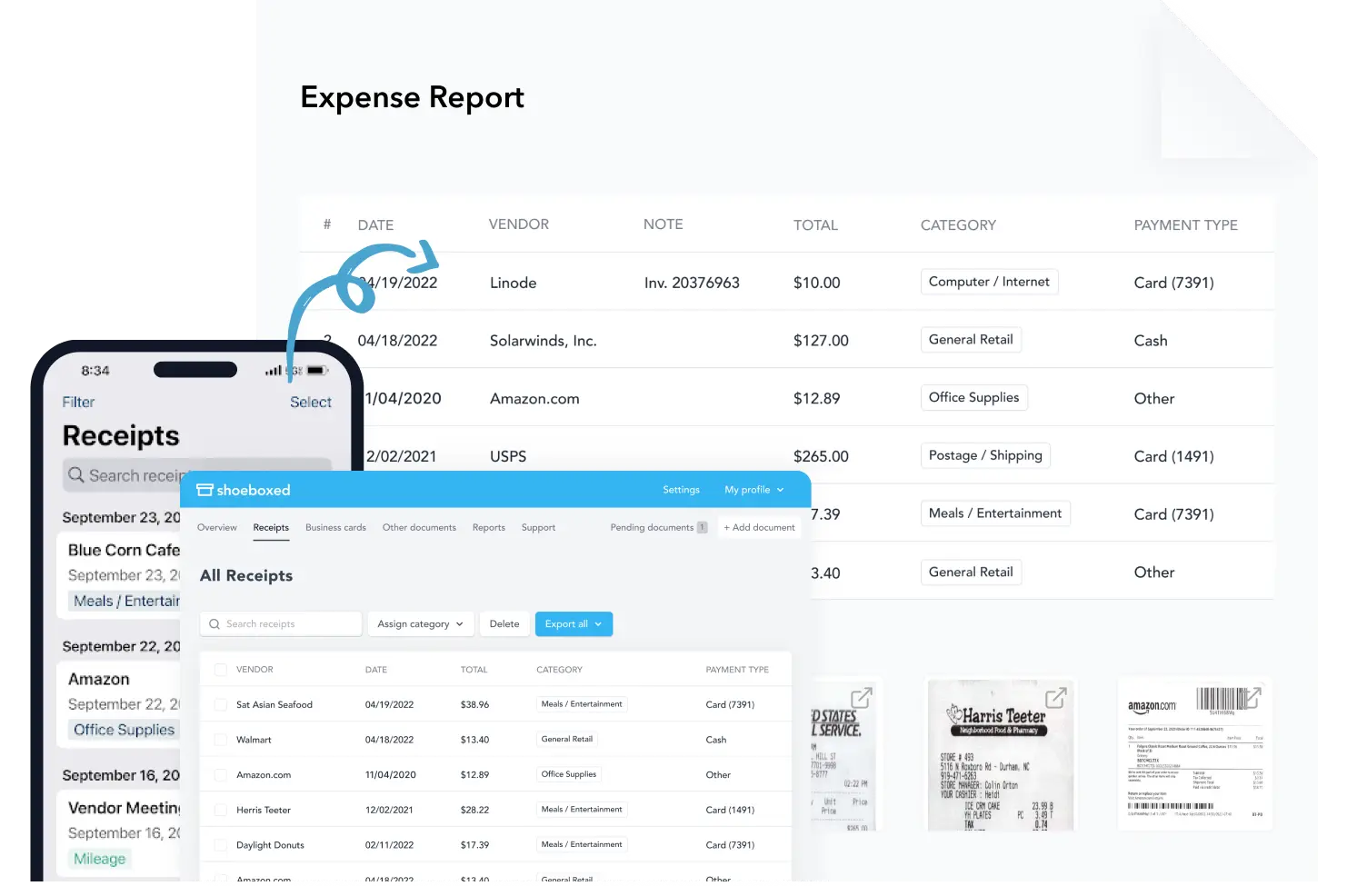Understanding the tax code and the nuances of a tax deduction or tax credit is as crucial in agriculture as knowing the land you till. Farming is a unique business with distinct challenges and specific tax advantages. However, many farmers overlook valuable deductions.
This article delves into some commonly missed tax deductions in the agricultural sector that can help farmers save money.
How can farmers reduce their taxable income?
One way farmers can reduce their tax burden is to maximize their deductions. Tax deductions can reduce your taxable income by lowering the portion of your earnings that is subject to income taxes.
By subtracting these deductions from your gross income (your income before taxes), you arrive at your adjusted gross income (AGI) or your taxable income. The lower your taxable income, the less income tax you will owe.
Since U.S. federal income tax is progressive, reducing your taxable income can also potentially place you in a lower tax bracket, thereby reducing the rate at which your income is taxed.
What are some of the most overlooked tax deductions for farmers?
Believe it or not, expenses can become a big advantage to a farmer during tax season. Identifying and utilizing these overlooked expenses and specialized deductions can significantly affect a farm's bottom line.
Here are some farm deductions that we have found to be the most overlooked:
Property taxes
Property tax is considered a tax write-off. Farmers can deduct property taxes associated with their farming business on their federal income tax returns.
These taxes are business expenses and can be reported on Part II of Schedule F (Form 1040), line 29, which reports farm income and expenses. The deductible property taxes include those paid on farm real estate, such as the land and buildings used in farming.
Farmers must ensure that the property taxes they deduct directly relate to the farm business. For instance, property taxes on land used for growing crops, raising livestock, or other farm-related activities are typically deductible.
However, taxes related to personal residence or non-farm property are not deductible on Schedule F. Still, they may be deductible on Schedule A (Itemized Deductions) if the farmer itemizes deductions instead of taking the standard deduction.
Additionally, if a farm property serves business and personal purposes, the property taxes should be appropriately apportioned, with only the business portion deductible on Schedule F.
Depreciation
Farmers should also take advantage of depreciation deductions for farm property, such as buildings, vehicles, and machinery. The Internal Revenue Service (IRS) allows for the cost of tangible property to be depreciated over its useful life, reducing taxable income.
One thing to keep in mind is to always consider using accelerated depreciation methods, like Section 179 or bonus depreciation, to increase deductions in the short term.
Wear and tear on farm equipment, buildings, and vehicles can also lead to significant tax deductions through depreciation. This non-cash expense allows farmers to recover the costs of assets over their useful life.
Many farmers underestimate this deduction due to its complexity or miss out on new tax laws that might increase allowable amounts, such as bonus depreciation or Section 179 property deductions. Depreciation is listed on Schedule F, line 14.
Prepaid expenses
Farmers can prepay some expenses, such as feed, seed, or fertilizer, up to 12 months in advance. Prepaying expenses can reduce taxable income in the current year, provided it makes sense from a cash flow and operational standpoint.
Farmers often purchase supplies such as seeds, fertilizer, or livestock feed in advance. Prepaying expenses can be strategic, allowing for better cash flow management and potential tax advantages. Prepaid expenses are recorded in Part II of Schedule F on lines 16, 17, and 26.
The IRS will enable farmers to deduct prepaid farm supplies up to 50% of other deductible farm expenses. However, strict rules govern what qualifies as a prepaid expense, and failing to adhere to these rules can lead to missed opportunities for deductions.
Employee wages and benefits
Hiring family members can help distribute farm income within the family. Wages paid to children or spouses are deductible as business expenses, and this strategy can shift income to family members in lower tax brackets.
Labor costs constitute a significant part of farm expenses. The entire cost of wages paid to farmworkers is fully deductible, yet the additional benefits provided, such as health insurance, retirement plans, or housing, can also be deducted.
Labor costs are recorded on Schedule F, line 22, and employee benefit programs are listed on line 15.
Employing family members and paying them a reasonable wage can be a tax-efficient way to distribute income within the family while leveraging deductions. Despite its benefits, this area often gets overlooked due to the complexities involved in employment taxes and benefits.
Invest in retirement plans
Contributing to retirement plans, such as an Individual Retirement Account (IRA) or a Simplified Employee Pension (SEP) plan, can reduce taxable income and provide for future financial security.
These contributions are typically tax-deductible and can significantly lower the year's taxable income. Retirement plan contributions are recorded on Schedule F, line 23.
Soil and water conservation efforts
Participate in agri-environmental incentive programs that offer tax credits or deductions. These programs are designed to encourage practices that benefit the environment and can provide financial incentives that also reduce taxable income.
Farmers are stewards of the land, often incurring expenses for soil and water conservation to protect and improve their farmland. However, many do not realize these costs can be deductible on Schedule F, line 12.
Expenses for measures like contour plowing, terracing, or installing irrigation systems to prevent erosion and promote water conservation might be deductible. These must be part of a local, state, or federal government agency's approved conservation plan.
These deductions often go unclaimed despite their potential benefits due to a lack of awareness or the complexities of proving their immediate necessity for land cultivation.
Custom hire (machine work) deductions
Hiring custom machine work is common in agriculture, from planting to harvesting. These expenses on Schedule F, line 13 can significantly reduce taxable income but are frequently overlooked.
Whether paying for the services of a combine for harvest or renting specialized equipment for planting, farmers should track these costs meticulously throughout the year. Proper documentation can turn these substantial outlays into beneficial deductions in tax time.
Utilities and farm business expenses
Running a farm requires various utilities, including water, electricity, and gas. These utilities listed on Schedule F, line 30, and other business-related expenses like insurance, maintenance, and office supplies are deductible.
However, farmers may not fully capitalize on these deductions because of poor record-keeping or a lack of understanding of what constitutes a business expense versus a personal cost.
Disaster and theft losses
Farming is inherently risky, and losses due to natural disasters, theft, or unforeseen circumstances are unfortunately common. While insurance may cover some losses, uninsured portions can be deductible.
Proper documentation and understanding of the tax implications of these unfortunate events can turn a portion of the loss into a financial recovery mechanism through tax deductions on Schedule F, line 32.
Marketing and promotion
Marketing and promoting farm products are often overlooked. These expenses include creating a website, advertising, or attending trade shows. Marketing becomes essential as farms expand their operations or explore direct-to-consumer sales channels.
These expenses are generally deductible on Schedule F, line 32, yet farmers unfamiliar with deducting such costs frequently overlook them.
Home office deduction
For farmers who tackle administrative tasks from a home office, some home expenses may be eligible as deductibles, such as a percentage of your utilities, insurance, and mortgage. Follow the instructions of Publication 587 to take this deduction.
Hit the road with Shoeboxed ⛟
Stuff receipts into the Magic Envelope while out and about. Then send them in once a month to get scanned. 💪🏼 30-day full money-back guarantee!
Get Started TodayWhat other farm expenses does the IRS consider deductible?
The following are some other eligible deductions or tax write-offs that are often overlooked and would be listed under Part II of Schedule F, line 32.
Internet
Containers and tying material
Subscriptions to trade journals that deal with farming
Stationery and stamps
Small tools expected to last one year or less
Service charges
Recordkeeping expenses
Milk assessment
Livestock fees
Bedding and litter
Insect dust and sprays
Attorney fees
Educational expenses related to maintaining and improving farming skills
Commission
Consultant fees
Crop scouting expenses
Due to cooperatives
Business travel and meals
Accounting fees
Livestock insurance
How can Shoeboxed help reduce your tax burden with these overlooked farm deductions?
Shoeboxed is a document management and expense tracking tool that can significantly aid farmers who raise livestock and grow crops in managing their deductions more efficiently, especially during tax season. Farmers can lower their tax bills by efficiently organizing their business farm receipts.
Here’s how Shoeboxed can be particularly beneficial for those in the farming industry:
Receipt organization

Organizing your farm business tax receipts can minimize overlooked farm income and deductions.
Farmers incur various expenses, from equipment purchases to seed and fertilizer costs. Shoeboxed allows users to digitize and organize receipts by simply taking a picture with their smartphone and scanning them. This process turns cumbersome paper receipts into categorized, IRS-accepted digital data, making it easier to track farm expenses and identify potential tax deductions.
Expense tracking
By categorizing expenses, Shoeboxed helps farmers keep track of their spending in different areas, such as livestock feed, machinery repairs, or irrigation supplies. This detailed categorization is essential for accurately reporting Schedule F expenses and maximizing potential deductions for costs related to the farming business.

Shoeboxed can be used as a receipt scanning app.
With the Shoeboxed app, farmers can capture their expenses on the go. You can take snapshots of your farm business receipts using your phone's camera. Data from the receipt is OCR extracted and the printed text is turned into digitally searchable data.

Shoeboxed can be used as a receipt scanning service.
Using Shoeboxed as a service, stuff a postage-paid envelope, known as the Magic Envelope, which is unique only to Shoeboxed, full of receipts, business cards, or other documents, and drop it in the mail. Shoeboxed does the rest. They'll scan and human-verify your receipts and load them into your Shoeboxed account, automatically categorizing them into 15 different tax categories.
Mileage tracking
Use your phone's built-in GPS for easy, accurate mileage tracking.
Farmers often travel significant distances for their business, whether transporting goods to market or purchasing supplies. Shoeboxed offers mileage tracking features that automatically record distances traveled for business for tax purposes only. This feature can help farmers claim the standard mileage rate deduction, a valuable tax deduction for vehicle use in a farming business.
Track mileage with Shoeboxed 🚗
Track mileage using your phone’s built-in GPS for unmatched ease and accuracy. Expense reports don’t get easier than this! 💪🏼 30-day full money-back guarantee!
Get Started TodayDocument management
Shoeboxed stores documents securely in the cloud, providing farmers with an organized, accessible archive of all their financial records, including sales invoices, utility bills, business tax returns, and property tax statements. This centralized document management aids in substantiating expenses and income reported on tax returns, which is crucial in the case of an IRS audit.
Report generation

Create comprehensive expense reports with receipt images from anywhere with Shoeboxed.
Farmers can generate expense reports directly from Shoeboxed, which can be extremely useful when preparing for tax filing or consulting with a tax advisor. These reports can provide a clear overview of the farm's financial activities, helping ensure that all potential deductions are accounted for and properly documented.
Audit protection
Having organized records and clear, categorized expenses can provide significant protection in the event of an audit. Shoeboxed ensures that all digitized receipts are IRS-accepted, which can be crucial for validating deductions if questioned.
Time and cost savings
By streamlining the paperwork process and reducing the need for manual entry, Shoeboxed saves time, reduces errors, and helps farmers save money. This efficiency can translate into cost savings, as it frees more time to focus on the farm's operations rather than administrative tasks.
Shoeboxed can be vital in any tax strategy, helping farmers manage their finances, track expenses, and maximize their tax deductions. By leveraging this tool, farmers can ensure that they are fully capitalizing on all eligible farm deductions, ultimately improving their overall financial management and potentially reducing their tax liability.
Turn receipts into data for tax time ✨
Try Shoeboxed’s systematic award-winning approach to receipt tracking for tax season. 30-day full money-back guarantee!
Get Started TodayFrequently asked questions
Can I write off my tractor on my farm tax return?
Yes, you can write off the cost of a tractor on your farm taxes, typically through depreciation or by taking advantage of specific tax provisions designed for farm equipment. Here’s how it works:
As a capital asset, the cost of farmland and a tractor can be depreciated over its useful life, meaning you can deduct a portion each year over several years. The IRS sets the useful life of farm equipment like tractors for depreciation purposes. This method spreads out the expense recognition for farm activities over the period the tractor is used.
Farmers can also take advantage of the Section 179 deduction, which allows them to deduct the total purchase price of qualifying farm equipment, including tractors, when placed in service. This can result in a farmer using a significant tax deduction in the year of purchase. Still, some limits and qualifications must be met to qualify, so it's essential to ensure the tractor and your farm business qualify under the current tax law.
You may be able to use bonus depreciation in addition to or instead of Section 179. This tax provision allows for a percentage of the cost of new and, in some years, used equipment to be deducted in the first year it is placed in service. The rate and rules for bonus depreciation can change by the next tax year based on tax laws.
If the tractor is leased or you claim you're paying a loan on the tractor, you may not be able to deduct the total cost upfront but can potentially write off the lease payments or the interest you pay on the loan as business expenses.
Should I hire a farm tax professional?
If your farming operation's tax burden is extensive or you're uncomfortable navigating the complexities of agricultural tax laws, always seek advice from a tax professional.
Every farm is unique, and a good farm tax professional can provide personalized advice that considers your specific circumstances, goals, and challenges. They can help with long-term tax planning and financial strategy beyond annual tax filing.
Tax laws and regulations change frequently. A farm tax professional stays current with the latest tax laws, ensuring that your farm's business tax returns comply with new rules and take advantage of any beneficial changes.
In the event of an IRS audit, having a farm tax professional who is familiar with your finances and tax filings can be invaluable. They can provide the necessary documentation, answer questions on your behalf, and guide you through the audit process.
While hiring a professional has a cost, the potential savings, peace of mind, and financial guidance they provide can be well worth the investment.
Can I deduct self-employment tax as a farm business expense?
You can not deduct self-employment tax as a farm expense. However, you can deduct one-half of your self-employment tax as an adjustment to income on Form 1040, Schedule 1, Line 15, with Schedule SE attached.
In conclusion
Potential tax deductions can be easily overlooked while managing a farm's day-to-day operations. However, understanding and leveraging them can lead to significant financial benefits. Farmers should work closely with an agricultural tax professional to maximize their tax deductions while complying with tax laws.
About Shoeboxed!
Shoeboxed is a receipt scanning service with receipt management software that supports multiple methods for receipt capture: send, scan, upload, forward, and more!
You can stuff your receipts into one of our Magic Envelopes (prepaid postage within the US). Use our receipt tracker + receipt scanner app (iPhone, iPad, and Android) to snap a picture while on the go. Auto-import receipts from Gmail. Or forward a receipt to your designated Shoeboxed email address.
Turn your receipts into data and deductibles with our expense reports that include IRS-accepted receipt images.
Join over 1 million businesses scanning & organizing receipts, creating expense reports, and more—with Shoeboxed.
Try Shoeboxed today!



